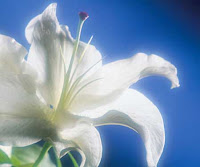Certain expressions she used made me think about how a persons body has nothing to do with who they are. That all the body does is contain your soul, and when a body shuts down, the soul is not connected to that tragedy. Therefore, when the author writes, “I am not there, I did not die!” she is saying that her body may be in the graveyard, but her spirit is eternal. It is a more light-hearted perspective in the topic of death and losing someone you love, and it is comforting to know. It made me realize you may never speak or see them again in person, but it doesn't mean they are not still there caring and watching over you. Mary uses environmental metaphors to imply that she still takes part in natures everyday life. That seeing the wind blow, or the sun shine is just a subtle reminder that she has not abandoned the people she loves.
 Reading this poem, I loved the way the poet described herself being in everyday life, even after her death. Someone who loves her was mourning at her grave, and she comforted the person by expressing that her spirit is still alive and will never leave them. “I am a thousand winds that blow. I am the diamond glint in the snow…etc.” I believe, from my own personal experiences,
Reading this poem, I loved the way the poet described herself being in everyday life, even after her death. Someone who loves her was mourning at her grave, and she comforted the person by expressing that her spirit is still alive and will never leave them. “I am a thousand winds that blow. I am the diamond glint in the snow…etc.” I believe, from my own personal experiences,that the death of a loved one is one of the most difficult obstacles to overcome. I have this opinion because when they are gone and you miss them, they can never come back. It is a concept where you never really get over it, you just get used to it. The reality that you will never be able to physically talk or see them ever again. I liked the fact that the author explained she was still there mentally, and that she would always be.
The author explains that although she is gone, her soul is still alive to watch over the people she loves. I chose this white lily to represent this poem because of the contrast the author uses between life and death. This lily reminds me of this poem, because to me a flower represents life, but the irony is that the colour white is a symbol of death.
I believe that the poem "Death" by Emily Dickonson connects to "Do not stand at my grave and weep" because of the metaphors used. Reading "Death", it is written in a way that in one sense may not seem like death at all, and in the poem i chose Mary Frye is stating that she did not die, and that her spirit lives on.
Death--Emily Dickonson
Because I could not stop for Death,He kindly stopped for me;The carriage held but just ourselvesAnd Immortality.
We slowly drove, he knew no haste, And I had put awayMy labor, and my leisure too,For his civility.
We passed the school, where children stroveAt recess, in the ring;We passed the fields of gazing grain,We passed the setting sun.
Or rather, be passed us;The dews grew quivering and chill,For only gossamer my gown,My tippet only tulle.
We paused before house that seemedA swelling of the ground;The roof was scarcely visible,The cornice but a mound.
Since then 'tis centuries, and yet eachFeels shorter than the dayI first surmised the horses' headsWere toward eternity.
Death--Emily Dickonson
Because I could not stop for Death,He kindly stopped for me;The carriage held but just ourselvesAnd Immortality.
We slowly drove, he knew no haste, And I had put awayMy labor, and my leisure too,For his civility.
We passed the school, where children stroveAt recess, in the ring;We passed the fields of gazing grain,We passed the setting sun.
Or rather, be passed us;The dews grew quivering and chill,For only gossamer my gown,My tippet only tulle.
We paused before house that seemedA swelling of the ground;The roof was scarcely visible,The cornice but a mound.
Since then 'tis centuries, and yet eachFeels shorter than the dayI first surmised the horses' headsWere toward eternity.
2 comments:
I love this poem, too. Like you, I find it very comforting.
Mark: fourteen out of fifteen
I LOVE YOU
Post a Comment